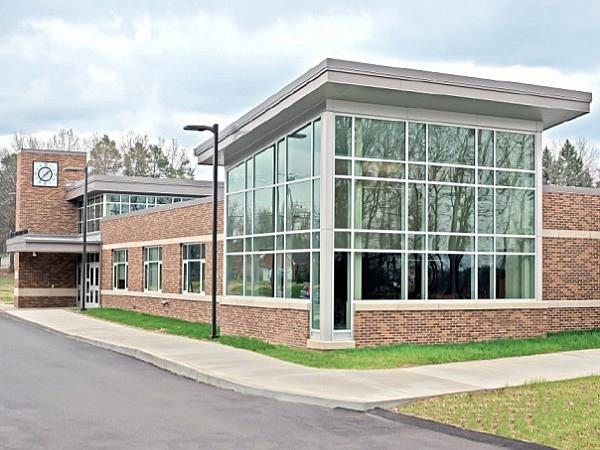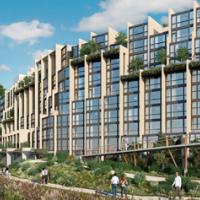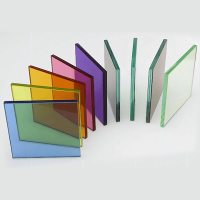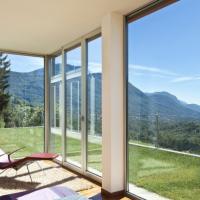
Date: 20 May 2019
Everytown, a movement of Americans working together to end gun violence and build safer communities, cites cumulative data from 2013 to 2018 that identifies 405 incidents of gunfire on school grounds, 260 of which occurred on K-12 school grounds.
Comprised of the Everytown for Gun Safety Support Fund, Moms Demand Action for Gun Sense in America, Students Demand Action for Gun Sense in America, American Federation of Teachers, and National Education Association, the Everytown organization conducts ongoing research about the manifestation of gun violence in American schools. Everytown tracks “any time a gun discharges a live round inside (or into) a school building, or on (or onto) a school campus or grounds.”
Some startling statistics:
- Between 2013 and 2018 there were 109 reported deaths and 219 reported injuries from school shootings.
- The majority of gun violence incidents in elementary, middle, and high schools – 56 percent – are homicides, assaults, and mass shootings.
- Far more common than mass shootings are incidents involving individuals, arguments that escalated, acts of domestic violence, parking lot altercations, and robberies where the school was the unfortunate backdrop.
Everytown has a multi-point plan to end gun violence in schools:
- Pass Red Flag Laws
- Encourage Responsible Firearm Storage
- Raise the Age to Purchase Semiautomatic Firearms
- Require Background Checks on All Gun Sales
- Create Threat Assessment Programs in Schools
- Implement Expert-Endorsed School Security Upgrades
- Initiate Effective Emergency Planning
- Create Safe and Equitable Schools
Learn more at https://everytown.org.
SECURITY GLASS CHOICES
According to Everytown, “Physical security is a critical intervention point to keep guns out of schools. The most effective physical security measures – the ones that are agreed on by most experts – are access control measures that keep shooters out of schools in the first place.”
For design and construction professionals responsible for incorporating physical security into a school building, one consideration may be the glass choice. But with so many descriptors – bullet-proof glass, security glazing, safety glazing – what’s the difference?
According to the glass.com Glass Dictionary, the phrase bulletproof glass actually refers to bullet-resistant glass. All glass will
shatter, and the thermoplastic can only absorb so much energy.
While these elements, used in combination, can slow – and often stop – a bullet, it must be stressed that there is no such thing as bullet-proof glass. For more information, visit https://info.glass.com/glass-dictionary/bullet-resistant-glass/.
Security glazing is designed to specifically resist human efforts to assault a building, whether to gain entry or to inflict damage to the building and injury to the building occupants. Security glazing generally differs from safety glazing in that security glazing is designed to withstand large blasts or direct hits for a short duration. Options for security glazing range in complexity from laminated glass to window film and anchoring systems. For more information, visit https://info.glass.com/glass-dictionary/security-glazing/.
Safety glazing has been reinforced to resist damage; tempered glass is the most basic form of safety glass.
In the article, Codes and Security Glazing (available online at https://safti.com/articles/codes-and-security-glazing/), SaftiFirst explains a brief history and different categories of security glazing test standards.
SCHOOL GUIDELINES
A host of standards apply to school design in terms of energy usage and building performance. But when it comes to security, there are few standards that apply. By contrast, prisons, embassies, and other types of government buildings have extremely specific guidelines. Schools are generally faced with the burden of developing their own requirements. Yet architects may be reluctant to recommend a level of security because it shifts liability to them.
Given the increased incidence of violence on school grounds, school districts, communities, and architects must balance new security concerns with ever-present budget considerations. Dodge Analytics reports that nationwide school construction activity continues to increase, attributing this rise to additional school bond funding approved to renovate older buildings.
The simple thought – install bullet-resistant glass throughout a school – is unfortunately cost-prohibitive for many school districts. Glass manufacturers have introduced new products designed to offer more variations in security glazing to help deter violence.
DELAYED FORCED-ENTRY
Delayed forced-entry glazing describes a category of security glazing designed to withstand impact. As its name implies, the product delays an intruder’s ability to force entry by damaging the glass. While the glazing won’t necessarily prevent someone fully intent on entry, it will slow progress, potentially long enough for first responders or other security measures to control the situation.
Delayed forced-entry glazing is more economical to implement than bullet-resistant glass, yet stronger than typical reinforced glass.
CONSIDERATIONS
When planning a new school design project or a renovation, consider the following factors in glazing decision-making:
- Security: What level of impact resistance is necessary and at what locations? For example, second floor windows might only require basic safety glazing while first floor windows may require delayed forced-entry or other security glazing; bullet-resistant glazing may be needed at primary entry doors and windows.
- Budget: What is your project budget? Will budget limit the ability to incorporate increased levels of impact resistance?
- New vs. Renovation: In cases of renovation or retrofit projects, is reuse of existing framing necessary?
CHILDGARD® SECURITY GLAZING
As design and glazing professionals work with education officials to improve safety and security, they’re exploring new glass options, such as CHILDGARD® Security Glazing.
Developed by Global Security Glazing—a sister company of J.E. Berkowitz and part of the Consolidated Glass Holdings Security Glazing division—CHILDGARD glazing is a laminated security glass constructed with a state-of-the-art proprietary interlayer designed to withstand extensive physical attack during a forced-entry scenario. It provides similar aesthetics and daylighting advantages to other glass choices, with an additional level of security.

The team behind CHILDGARD spoke with the Architectural Glass Institute about considerations for delayed forced-entry glazing.
How does it provide increased security?
CHILDGARD glazing is a laminated glass solution that is structurally glazed into the framing system. A silicone sealant adheres the glass to the framing system, increasing the stability and performance of the glass because it is anchored to the building structure. By comparison, security glazing films provide increased breakage protection, but are only applied to the surface of the glass. Films don’t provide added support to hold the glass within the frame.

How easy is it to install?
Bullet-resistant glazing systems often require specialized training and installation certifications, making the products not only more expensive to purchase but also more expensive to install. By comparison, CHILDGARD glazing was developed to fit into standard door, framing, and window systems, including curtain wall and storefront glass framing, and with typical installation methods.
Any professional glazier familiar with those systems can install CHILDGARD glazing. From a school’s perspective, the product offers several levels of value: initial cost is lower; it can be installed in existing window framing; and it offers a security feature that helps protects students, teachers, and staff.

How does it compare to other detention products?
As a delayed forced-entry solution, CHILDGARD glazing provides a lower-cost alternative to attack-resistant or bullet-resistant glass. Since the product can be installed in existing systems, it also can be used for retrofit projects.
Refer to the CHILDGARD brochure for more information: http://security-glazing.com/childgard-security-glazing/.

CHILDGARD
Information for this Devil’s Detail was provided by Angela Beach, Ben Baum, and the team at Global Security Glazing.
 Global Security Glazing and J.E. Berkowitz are part of the Consolidated Glass Holdings, Inc. family of companies that manufactures security, specialty, and architectural glass solutions.
Global Security Glazing and J.E. Berkowitz are part of the Consolidated Glass Holdings, Inc. family of companies that manufactures security, specialty, and architectural glass solutions.
Global Security Glazing offers protection against forced-entry, ballistic, blast, and fire scenarios, and can be customized for a variety of building types that require enhanced security, including schools, zoos, embassies, courthouses, detention facilities, and other buildings.
For additional information about CHILDGARD glazing described in this article, visit CHILDGARDGlazing.com or http://securityglazing.com/wp-content/uploads/2019/02/CHILDGARDBrochure-2019-web.pdf.
 600450
600450






























Add new comment